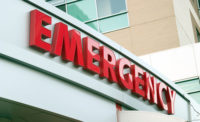Study reveals odds of catching coronavirus on an airplane

A new study says the odds of catching novel coronavirus on an airplane with infected passengers appear to be relatively small, though still possible.
In a report eport recently published in the journal JAMA Network Open, the German researchers reported on the health status of 102 passengers who boarded a Boeing 737 flight in Tel Aviv, Israel, on March 9, according to the study. The flight, just over 4.5 hours, was going to Frankfurt, Germany, before strict COVID-19 protocols were in place, such as mandating masks for crew and passengers as well as the restriction of congregating in aisles.
Several days before taking the flight, seven members of a 24-person tour group on the plane came unknowingly in contact with a hotel manager who tested positive for COVID-19. The group was notified upon landing and tested, according to the study. Seven members of the group were positive for COVID-19 and referred to as index cases in the study. Four were symptomatic, two pre-symptomatic, and one was asymptomatic.
The study’s investigators followed up with 71 of the other 78 passengers aboard and stated in the report that two passengers who were seated within two rows of an infected tour member tested positive, likely due to an onboard transmission of COVID-19.
“We discovered 2 likely SARS-CoV-2 transmissions on this flight, with 7 index cases," researcher Dr. Sandra Ciesek, of the Institute for Medical Virology at Goethe University in Frankfurt, stated in the report. “These transmissions may have also occurred before or after the flight.”
“The risk of transmission of droplet mediated infections on an aircraft depends on proximity to an index case and on other factors, such as [the] movement of passengers and crew, fomites, and contact among passengers in the departure gate," the researchers explained.
The team of researchers also noted how the plane’s airflow system may have limited the number of potential COVID-19 cases.
“The airflow in the cabin from the ceiling to the floor and from the front to the rear may have been associated with a reduced transmission rate. It could be speculated that the rate may have been reduced further had the passengers worn masks," they wrote.
Looking for a reprint of this article?
From high-res PDFs to custom plaques, order your copy today!






